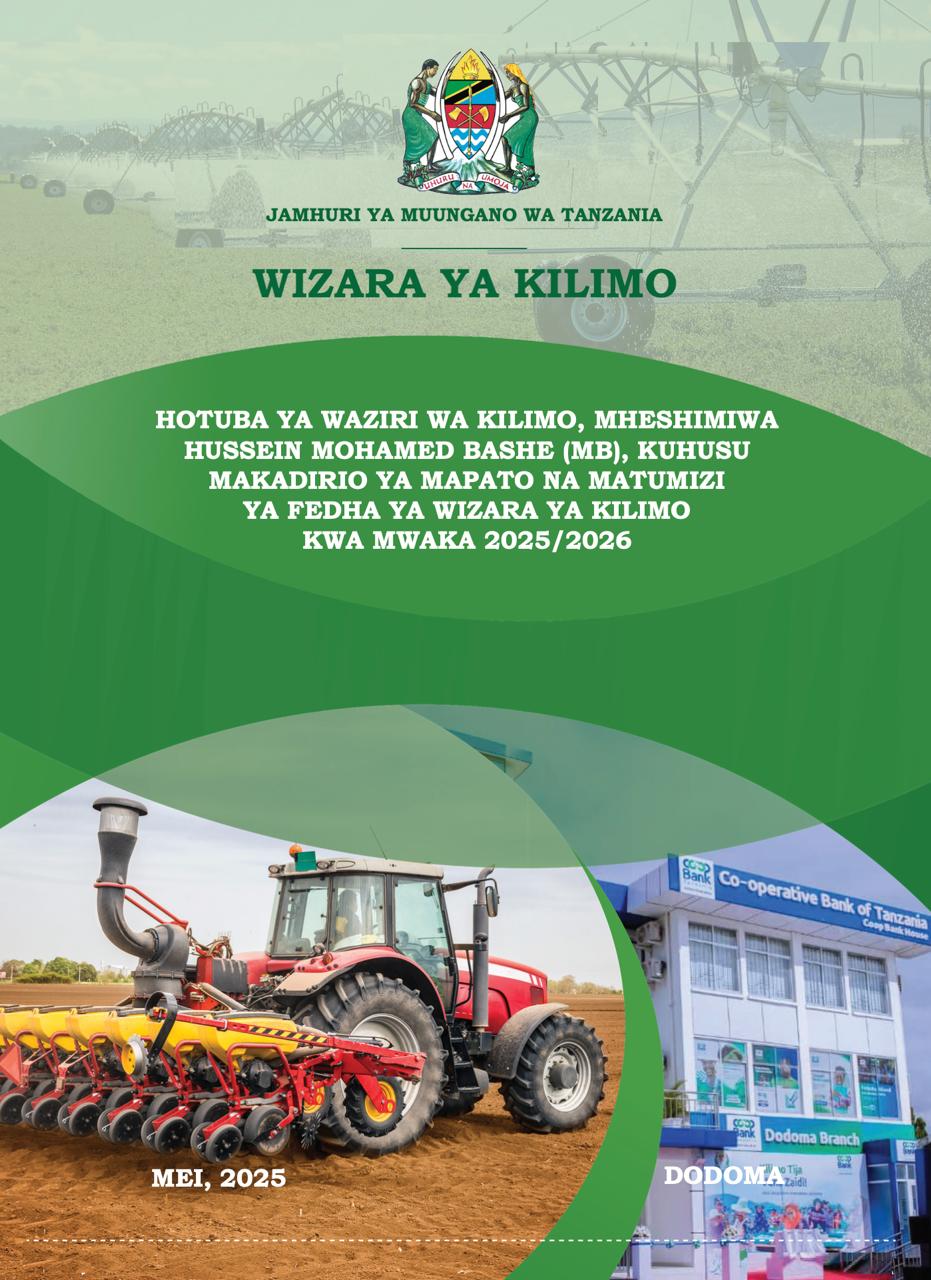DODOMA, TANZANIA | May 2025 — In a landmark move set to redefine the country’s agricultural landscape, Tanzania has officially launched four national Agricultural Growth Corridors (AGCOT) , signaling a strategic shift from regional pilot programs to a unified, nationwide approach aimed at boosting productivity, agro-processing, and global competitiveness.
The announcement was made by Hon. Hussein Mohamed Bashe, Minister of Agriculture, during the presentation of the 2025/2026 national budget in Parliament. The initiative elevates the earlier Southern Agricultural Growth Corridor of Tanzania (SAGCOT) model into a broader framework—Agriculture Growth Corridors of Tanzania (AGCOT) —designed to drive rural transformation across diverse ecological zones.
Prime Minister Kassim Majaliwa officiated the formal launch of AGCOT on April 27, 2025, marking a new chapter in Tanzania’s efforts to modernize its agriculture sector and stimulate inclusive economic growth.
A Unified Framework for Agricultural Transformation
The newly established Agriculture Transformation Office (ATO) will coordinate the four corridors—Central, Southern, Mtwara, and Northern —each functioning as a dynamic hub for innovation, market access, financing, and sustainable farming practices.
These corridors are expected to:
- Boost crop yields and overall productivity
- Improve access to domestic and international markets
- Encourage investment in agro-processing and value addition
- Expand distribution networks for high-quality seeds, fertilizers, and other farm inputs
According to the budget speech, the government has earmarked direct funding to operationalize these corridors, ensuring rapid implementation of transformative initiatives.
Integration of SAGCOT into AGCOT
The SAGCOT Centre , which served as the pilot for the Southern Corridor since 2011, will now be integrated into the broader AGCOT structure under the oversight of the ATO. As noted in Paragraph 329 of the budget, this integration is intended to harmonize past investments with future ambitions, creating a more coordinated and scalable model of agricultural development.
Aligning with Continental and National Goals
The AGCOT strategy aligns closely with Tanzania’s long-term Agriculture Master Plan 2050 and supports the African Union’s CAADP 2026–2035 agenda , reinforcing the nation’s commitment to food security, climate resilience, and regional trade.
This corridor-based model replaces fragmented, project-driven interventions with a systems approach designed to catalyze large-scale rural development, job creation, and private-sector participation.
A Call for Broad-Based Collaboration
Minister Bashe urged farmers’ organizations, private investors, financial institutions, and development partners to actively support the AGCOT initiative. “This is not just a government program—it is a national movement,” he emphasized.
With Tanzania targeting agricultural exports worth over USD 5 billion by 2030 , the corridors are poised to become the backbone of the country’s agri-industrial transformation, fostering infrastructure development, attracting value chain investment, and generating dignified employment opportunities for youth and women.
As Tanzania embarks on this bold journey, AGCOT represents more than a geographic reorganization of farming zones—it symbolizes a new vision for the future of agriculture: one rooted in innovation, inclusivity, and sustainability.
